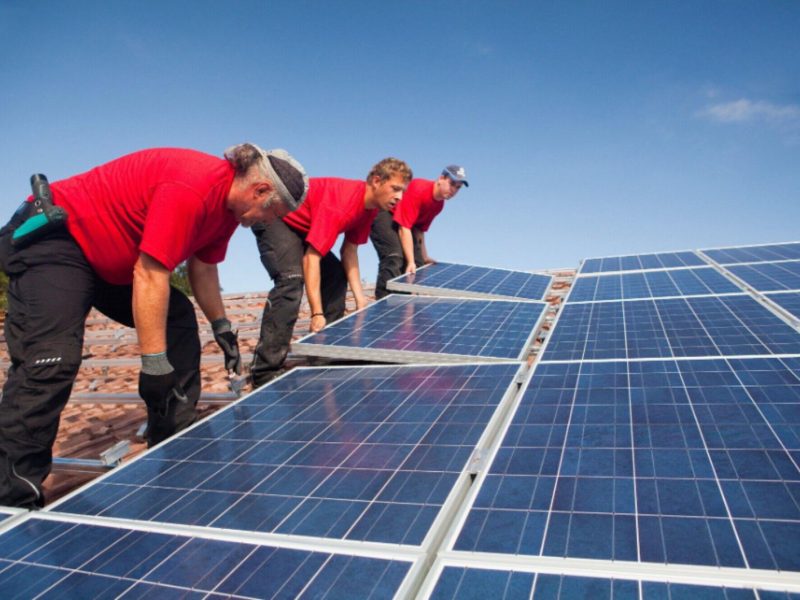In a dynamic world where environmental sustainability is a pressing concern, the concept of sustainable illumination—sitting at the crossroads of technological innovation and ecological mindfulness—has taken a front seat. By definition, sustainable illumination is an approach toward lighting that places high regard on reducing energy consumption while minimising the environmental impact, primarily through energy-efficient technologies. The significance of energy-efficient lighting has grown in recent decades, emanating from its potential to mitigate climate change, reduce energy bills, and enhance the quality of life. This article will provide an in-depth overview of the evolution and advancements in energy-efficient lighting technologies, substantiate the necessity and advantages of their adoption, and discuss the anticipated future trends in this realm.
Table of Contents
Understanding the Need for Energy-Efficient Lighting
With the escalating pace of urbanisation and industrialisation around the globe, energy consumption has skyrocketed, straining our finite resources. In this scenario, lighting has been noted to account for about 15% of global electricity consumption and 5% of worldwide greenhouse gas emissions—a profound impact by any stretch.
Traditional lighting technologies such as incandescent bulbs, halogen lamps, and even compact fluorescent lamps (CFLs) are fraught with challenges. These devices operate on principles that dissipate a significant chunk of energy as heat, leading to a rueful waste of electricity.
Moreover, the environmental fallout from conventional lighting technologies is equally concerning, contributing more carbon dioxide and other greenhouse gases to the atmosphere than the aviation industry. The cumulative impact of these aspects underscores the importance of energy-efficient lighting technologies and the undeniable necessity of sustainable illumination.
The Evolution of Energy-Efficient Lighting Technologies
The cradle of modern lighting lies with the humble incandescent bulb—a technology that ratified Thomas Edison’s genius but has since found itself eclipsed by several successors that promise higher energy efficiency and longevity.
Edison’s incandescent bulb gave way to fluorescent and CFLs—an innovative technology that provided more light per unit of power consumed. A stark divergence from incandescent bulbs, fluorescent lighting cancels the transmutation of electrical energy into heat, thereby providing greater operational efficiency and a longer lifespan.
Subsequently, the crowning achievement in the phalanx of electric lighting technologies appeared in the form of light-emitting diodes (LEDs), offering unparalleled efficiency. These devices capitalise on the principles of electroluminescence, thus wasting fewer resources and resulting in less environmental damage.
In tandem with these elemental transitions, automation in lighting systems, including motion sensors and smart controls, have further optimised consumption by factoring in human presence, daylight availability, and even user preferences. Collectively, these advancements showcase the potential of technology in addressing the critical challenge of sustainable illumination.
Spotlight on LED: The Pinnacle of Energy-Efficient Lighting
The popularity of LEDs in recent times is no serendipitous occurrence—it’s a testament to their unparalleled advantages. Far from merely being electricity converted to light, LEDs embody the principles of form following function: they are compact, durable, and available in a wide range of colours.
Since its inception, LED technology has steadily evolved and confronted initial limitations head-on. From issues with luminous efficacy to dealing with colour rendition, progress in several fronts has enabled LEDs to outshine traditional lighting solutions. It’s worth noting that well-designed LED lighting can cut energy use by more than 80% compared to traditional incandescent bulbs while delivering equal or superior lighting output.
LEDs contribute to sustainable illumination by reducing the overall energy demand of the lighting sector—mitigating climate change—and by curtailing the need for frequent replacements due to their long lifespan.
Other Emerging Trends in Energy-Efficient Lighting
While LEDs remain at the forefront, several other upcoming technologies are showing promise. Smart lighting systems equipped with automated controls offer the ability to adjust light levels in response to specific triggers—for instance, natural daylight availability or room occupancy—providing greatly reduced energy usage.
Meanwhile, solar-powered lighting systems—harvesting and storing the inexhaustible energy of the sun—proffer a green solution that could potentially revolutionise the external lighting sector, from street lights to signage.
The technological vista also offers a glimpse into the future hallmarks of energy-efficient lighting. Organic LEDs (OLEDs), poised to redefine flexible display technology, offer more efficient light output, and light fidelity (Li-Fi)—a ground-breaking innovation that provides dual roles of illumination and high-speed wireless data transmission with the flicker of a light bulb.
The Impacts and Challenges of Implementing Energy-Efficient Lighting
Adopting energy-efficient lighting carries multi-dimensional impacts. From an economic standpoint, the reductions in operating energy use result in lower electricity bills. With LED lights consuming 90% less energy than incandescent alternatives, it’s a direct path to reduce living costs.
From an environmental perspective, sustainable illumination plays an essential role in curtailing greenhouse gas emissions. It is a key component in the global go green with local leading electricians‘ movement, focussing on sustainable practices at local and community levels. However, uptake of these eco-friendly practices may be beset by obstacles such as higher upfront costs, lack of consumer awareness, and in some cases, technical concerns like quality of light.
Conclusion
Revolutionary advancements in energy-efficient lighting, starting from the humble incandescent bulbs to today’s LEDs, have set a new standard for lighting in our homes and workplaces. Through the lens of human progress, the focus on energy-efficient lighting reveals that the path to a sustainable future might just start with changing a light bulb. As we continue to explore and develop more efficient technologies, each step carries the promise of a greener future, better living conditions, and a healthier planet.

